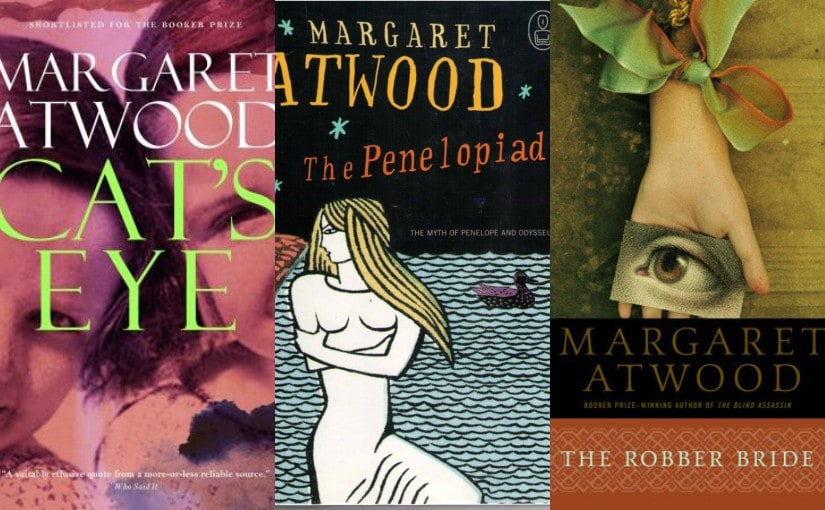One of Netflix’s latest offerings is an adaptation of Margaret Atwood’s 1996 novel Alias Grace. The novel tells the story of a psychiatrist called Simon Jordan, who looks into and researches the behaviour of Grace Marks, a mild-mannered woman convicted of the murder of Thomas Kinnear, the man whose house she worked at, and his housekeeper Nancy Montgomery. He must try to figure out if Marks has truly committed the crime and if she is sane.
This adaptation is the second to throw the spotlight back on Atwood’s works after the award-winning adaptation of The Handmaid’s Tale, starring Elizabeth Moss. Both series tell us about the relevance of the author’s works years after they were published. While Alias Grace and The Handmaid’s Tale are favourites in bookstores and literature classes, Atwood’s other works, too, are just as significant. Here’s a look at five of her other lesser-known novels which are worth a read: The Blind Assassin This novel won Atwood the Man Booker Prize nearly three decades after her first book was published. It tells the story of Iris, who recounts the story of her life and relationships as an old woman. Central to the story is her sister Laura, who writes a book about a politically radical science fiction author called Alex Thomas, which is later published by Iris. The Blind Assassin is a novel within a novel, and there is a tale within the fictional novel too; Alex Thomas writes a story called The Blind Assassin (where Atwood’s own novel derives its name from). Thomas has a complicated relationship with Laura and Iris. The novel’s sub-plots also include the role that Iris’ husband Richard Griffen plays in wrecking the sisters’ lives, and the fact that they lost their mother at a young age. The Edible Woman Atwood’s first novel, which she termed proto-feminist, tells the bizarre tale of a woman who finds herself increasingly losing her appetite and eventually being metaphorically devoured by her boyfriend. The protagonist, Marian MacAlpin, finds that her regular, consumerist lifestyle comes apart as her boyfriend demands that she become more feminine. She begins to ascribe human qualities to the meat and is unable to eat anything towards the end of the novel. It is believed that Atwood drew from her own life experiences. [caption id=“attachment_4201691” align=“alignnone” width=“825”]  The covers of Margaret Atwood’s books. Images from Facebook/@MargaretAtwoodAuthor[/caption] The Penelopiad In this novel, Penelope, the wife of Odysseus, talks about life in Hades, Helen of Troy, her husband and her relationship with her parents. Her thoughts are interrupted by a twelve-member Greek chorus, and their interludes take the form of a lament, an idyll and ballad, among other literary forms. The Penelopiad explores the themes of the fairness of justice and the double standards of justice between the two sexes. A theatrical adaptation was staged by the Royal Shakespeare Company. Mythological characters and Greek story lines have been used by Atwood in many of her other works. Cat’s Eye Atwood’s seventh novel was a finalist for both the Man Booker Prize and Governor General’s Award. The book is told through the eyes of the protagonist Elaine Risley, who is a controversial painter. She reflects on life from World War II to the late 1980s, as well as contemporary issues with respect to feminism and the art world. The strongest of the memories she recounts are of a group of girls who are both cruel and kind to her, and thus shape her perception of the world. Despite becoming a successful artist, Elaine remains haunted by her childhood memories, especially Cordelia, who is the leader of the group of girls she met as a young girl, with whom she develops a close but complicated relationship. The Robber Bride Three women who meet every month to enjoy a meal together are at the center of this novel set in Toronto, Ontario. They are brought together by the influence that a woman called Zenia has on all of their lives; Zenia “stole” each of the men they were with. They believe that she is dead but later discover that she actually staged her death. In a series of three individual confrontations, Zenia tells them that the men they were with did not deserve them. This book, apart from dealing with the charactersitically Atwood-esque theme of the war of the sexes, but also sisterhood.


)
)
)
)
)
)
)
)
)



